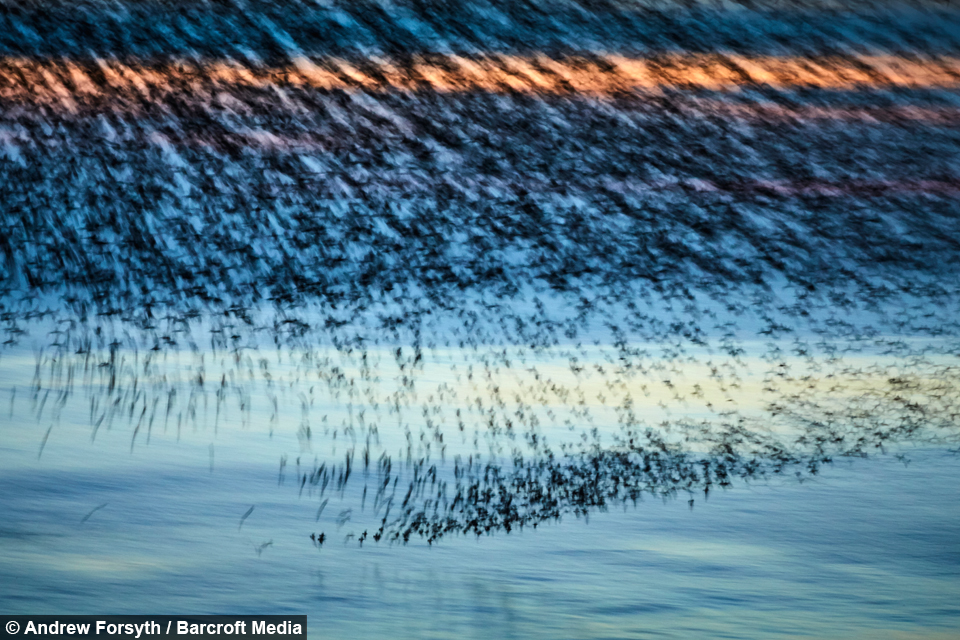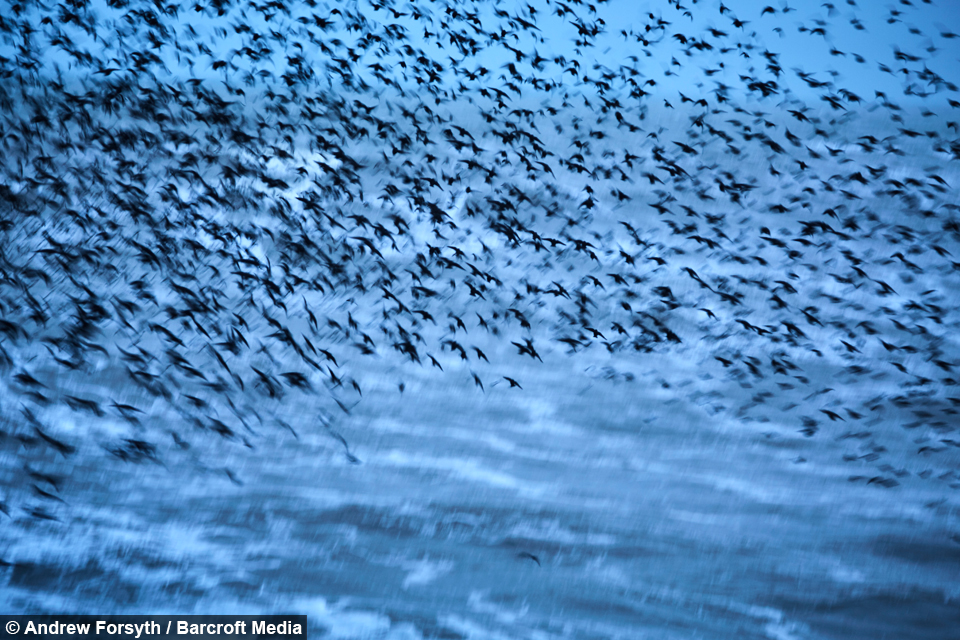Startling Starlings: Thousands of Birds Fill The Sky In Stunning Formations
By Crystal Chung @crystalkchung
Scroll down for the full story
But they are actually photographs of starling murmurations over the sea, created by wildlife photographer, Andrew Forsyth.
Working on the project for three years, Andrew has now over 40,000 thousand photos of the starlings coming in to roost each night under Brighton Pier, Sussex - his home town.
The secret behind the impression is using hand-held cameras with slow shutter speeds.
Beginning his project in January 2014, over the winter months when the starlings roost in large numbers the series of stunning images show flocks flying in tight formations.
Andrew said: “The starlings gather together in large flocks at dusk and perform a murmuration before going into their roosts under the pier.
“The flocks fly in tight formation and wheel around the sky for anywhere between a few minutes to three quarters of an hour.
“At times they are just a few inches above the waves and they will perform this behaviour regardless of the weather conditions. Some of these photographs are taken during severe winter storms with winds up to 80mph. Others are taken on sunny evenings when the sea is calm.”
Forsyth started documenting the murmurations in late 2013 but quickly realised that a conventional still photograph did not capture the energy or movement.
He said: “I began experimenting and started using slow shutter speeds, but rather than using a tripod I hand-held the camera to create these impressionistic images.
“Each night would yield different images – depending on the state of the sea, the quality of the light etc – so I kept on working for up to five nights each week each winter.
For Andrew, the hardest part of the project was following the birds in flight once the camera shutter was open and the viewfinder went black.
He said: “You soon learn that the direction of the flock is highly complex, with a lot of movement within any given group. I try to follow a single bird and hope that others around it follow suit.”
The photographer explains: “There is no proven explanation into why starlings perform murmurations. The most likely reason is to deter or confuse predators such as the peregrine falcon from picking off individual birds as they come to roost.”








